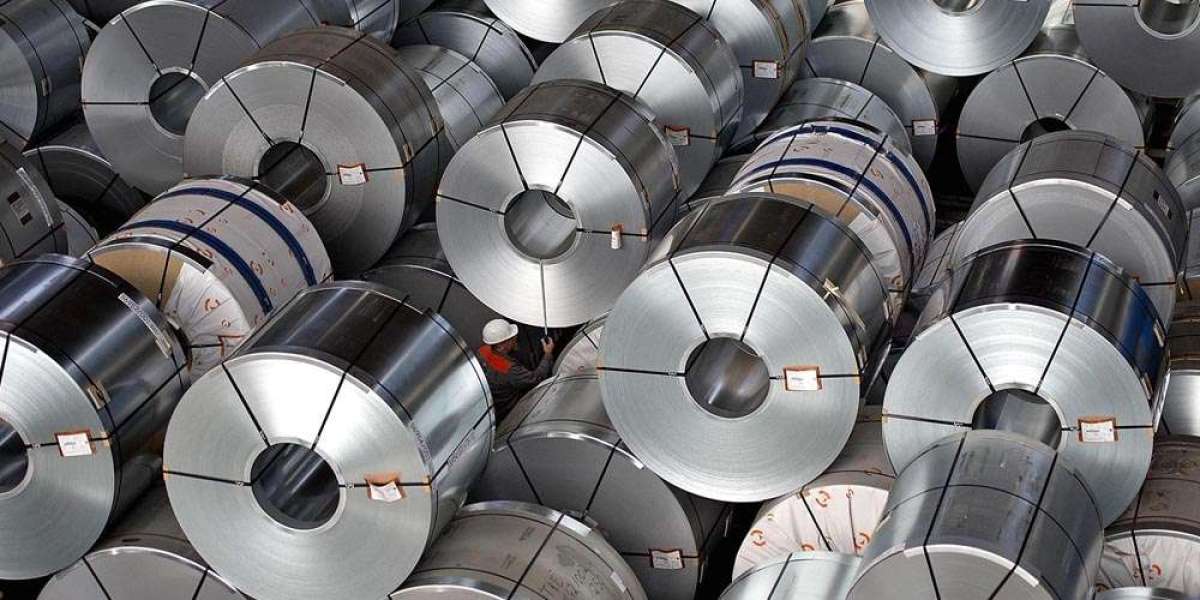The steel industry is one of the largest contributors to global carbon emissions, accounting for nearly 7-9% of total CO₂ emissions worldwide. As industries push towards decarbonization, green steel—produced using hydrogen or renewable energy instead of coal—has emerged as a game-changer. However, despite its environmental benefits, the penetration of green steel market faces several economic, technological, and logistical barriers. This article explores the current state of green steel, the key drivers for its adoption, challenges in market penetration, and future growth opportunities.
Current State of the Green Steel Market
Green steel is still in its early stages, but major steel manufacturers and startups are investing heavily in developing carbon-neutral alternatives. Companies like SSAB, ArcelorMittal, and H2 Green Steel are leading the way with pilot projects, aiming for large-scale production by 2030. Governments and regulatory bodies are also pushing policies to promote carbon-free steelmaking, including tax incentives and subsidies.
Despite these efforts, green steel currently represents only a small fraction of global steel production. High production costs and the need for infrastructure changes make widespread adoption a slow process.
Key Drivers for Green Steel Market Penetration
Several factors are accelerating the adoption of green steel:
- Regulatory Pressure – Governments worldwide are setting strict carbon emission targets, compelling industries to adopt greener practices. The EU Carbon Border Adjustment Mechanism (CBAM) is one such policy encouraging sustainable steel production.
- Corporate Sustainability Goals – Many large corporations, including automotive, construction, and consumer goods manufacturers, are committing to net-zero supply chains, increasing demand for green steel.
- Advancements in Hydrogen Technology – The use of green hydrogen as a reducing agent in steel production is becoming more viable with declining hydrogen production costs.
- Investor and Consumer Demand – Green finance initiatives and ESG (Environmental, Social, Governance) investing trends are pushing steelmakers toward sustainable practices.
Challenges in Green Steel Market Penetration
Despite strong momentum, several challenges hinder the market penetration of green steel:
- High Production Costs – Producing green steel using hydrogen-based processes is currently 30-50% more expensive than conventional steelmaking.
- Infrastructure and Supply Chain Barriers – Hydrogen production, storage, and transportation require massive infrastructure changes.
- Limited Availability of Green Energy – Large-scale production needs significant amounts of renewable electricity, which is not yet widely available.
- Market Competition with Traditional Steel – The steel industry operates on thin margins, and switching to green steel requires substantial investments.
Strategies to Accelerate Market Penetration
To overcome these challenges, industry stakeholders must adopt several strategies:
- Scaling Up Hydrogen Production – Expanding green hydrogen production and reducing costs through technological advancements and economies of scale.
- Government Support and Incentives – Policies such as carbon pricing, tax credits, and direct subsidies can help bridge the price gap between green and traditional steel.
- Public-Private Partnerships – Collaboration between governments, steelmakers, and technology providers can speed up infrastructure development.
- Consumer Awareness and Demand Creation – Educating industries and end consumers about the benefits of green steel can drive demand.
Future Outlook of Green Steel Market
The green steel market is projected to grow significantly in the next decade, with global production expected to reach 50 million metric tons by 2030. Innovations in electrolysis, direct reduced iron (DRI) technology, and circular economy practices will play a crucial role in making green steel the industry standard. With strong policy backing and corporate commitments, green steel is poised to become a mainstream material in the future of sustainable manufacturing.
Conclusion
While green steel is still in its infancy, its market penetration is steadily increasing due to regulatory pressure, corporate sustainability initiatives, and advancements in clean energy technologies. Overcoming cost and infrastructure barriers will require collaborative efforts from governments, industry leaders, and investors. As demand for low-carbon manufacturing grows, green steel is set to revolutionize the future of industrial production.








